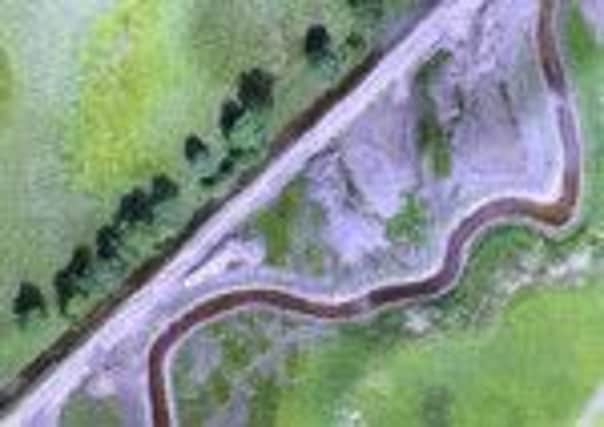Salmon stock hopes at restored River South Esk


• The restored Rottal Burn tributary was opened by former TV presenter Fiona Armstrong
• Esk Rivers and Fisheries Trust believe it will create a suitable habitat for salmon
Advertisement
Hide AdAdvertisement
Hide Ad• The South Esk is a Special Area of Conservation for Atlantic salmon and freshwater pearl mussel.
The Rottal Burn, a major tributary of the River South Esk in Glen Clova in Angus, was radically straightened and a large channel dug around 1800 to reduce flooding in the area. And, more recently, the lower part of the channel was dredged, effectively destroying the entire habitat for fish in the large burn.
But, a pioneering project to restore the crucial part of the river system to its original course - recreating a suitable habitat for salmon and other fish species - has now been completed by the Esk Rivers and Fisheries Trust (ERFT).
And today the restored course of the Rottal Burn was officially opened by keen angler and former television presenter Fiona Armstrong, Lady MacGregor of MacGregor who is married to Scottish Clan Chief Sir Malcolm MacGregor.
Dr Marshall Halliday, director of ERFT, explained: “We wanted to remedy the fact that a significant section of the South Esk catchment was, because of man’s historical intervention, so unsuitable for fish. Using old maps and aerial photographs to identify the original water course, we formulated and considered several options for its restoration and reconnection to its flood plain.
“Once the final selection was made, it was subjected to additional scrutiny concerning channel stability, river bed stability, and hydrology and habitat diversity.” Dr Halliday continued: “All the works were completed between May and August 2012. The final phase involved the connection of the Rottall Burn into the new channel and the closure of the old channel.
“It is heartening that salmon and sea trout almost immediately moved into the new channel where they were observed spawning in November.”
Tom Sampson, the trust’s chairman, said: “The South Esk is a Special Area of Conservation for salmon and as such it is incumbent on us to maximise its potential.” He continued: “This has been a trailblazing project and I have no doubt that it will be replicated elsewhere in Scotland.
Advertisement
Hide AdAdvertisement
Hide Ad“We are particularly grateful to SEPA’s Water Environment Fund for providing most of the money for the project and to Dee Ward of Rottal Estates for allowing his land to be restructured.”
Alice Tree, the advice and engagement specialist at the Scottish Environment Protection Agency (SEPA), said: “The Water Environment Fund was pleased to support the trust’s restoration of Rottal Burn and the project has been a great demonstration of partnership working.”
She added: “The project restored a significant stretch of realigned river into over one kilometre of natural river course and removed physical pressures affecting the burn. Following the work, the burn has also seen its River Basin Management Plans morphology classification improve from moderate to good.”
Isla Martin, SNH’s Operations Officer, also praised the scheme. She said: “It is great to see that the fishery trust, in partnership with a forward thinking and visionary landowner and a wide range of interested parties, has been able to restore such a large section of river and that it is already providing a range of benefits.
“The Rottal Burn project is a fantastic example and we very much hope it will be an inspiration to others.” As part of the restoration scheme, several thousand native tree species were planted in 2012 and in the Spring of this year to increase shade, water storage and reduce any diffuse pollution.
A total of 800 metres of canalised water course has been restored to its original course. A trust spokesman explained: “The additional benefits include the creation of a diverse riparian and aquatic habitat, a return to a more natural flow regime and the visual enhancement of the area. There is also a possibility of transferring of freshwater pearl mussels into the burn.”
The River South Esk is designated a Special Area of Conservation for both Atlantic salmon and the freshwater pearl mussel.